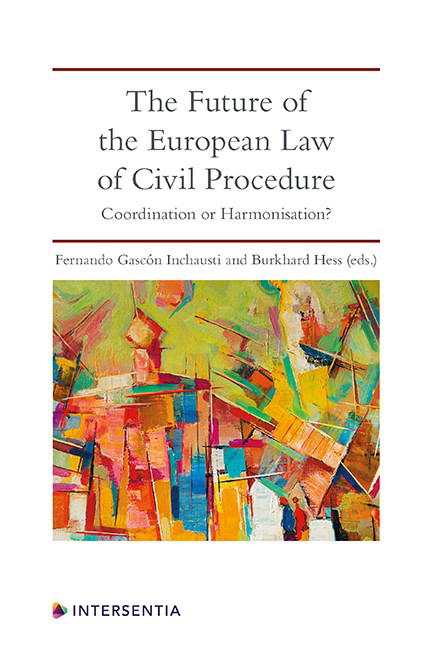Book contents
- Frontmatter
- Contents
- List of Cases
- List of Authors
- Introduction
- PART I METHODOLOGICAL APPROACHES
- PART II THE CURRENT SITUATION: VERTICAL AND HORIZONTAL HARMONISATION
- PART III CURRENT INITIATIVES FOR FURTHER HARMONISATION: The ELI/UNIDROIT Project
- The 2017 Directive Proposal on Common Minimum Standards of Civil Procedure
- Index
- ABOUT THE EDITORS
Initial Remarks on the Methodological Approaches to Procedural Harmonisation
Published online by Cambridge University Press: 23 July 2020
- Frontmatter
- Contents
- List of Cases
- List of Authors
- Introduction
- PART I METHODOLOGICAL APPROACHES
- PART II THE CURRENT SITUATION: VERTICAL AND HORIZONTAL HARMONISATION
- PART III CURRENT INITIATIVES FOR FURTHER HARMONISATION: The ELI/UNIDROIT Project
- The 2017 Directive Proposal on Common Minimum Standards of Civil Procedure
- Index
- ABOUT THE EDITORS
Summary
Model laws, minimum standards, directives, recommendations – the variety of instruments designed to harmonise law has almost become confusing. In order to clarify the picture, the present contribution first gives an overview of the different instruments that might be suitable for harmonising civil procedure (section 1). In a second step, it will be analysed which types of instruments have already been used on the European level, and major weak and strong points of these instruments will be discussed (section 2). This leads finally to the question which type of instrument might be suitable for future challenges (section 3).
INSTRUMENTS DESIGNED TO HARMONISE PROCEDURAL LAW
Different types of instruments are to be distinguished.
On the one hand, there are hard law instruments, such as conventions and, at the European level, directives and regulations. All these instruments are characterised by their binding character.
On the other hand, there is a vast variety of soft law instruments. Their common element is the absence of any binding effect. This means that they have to convince the addressees by their substance. Within this huge category of soft law, another distinction might be made between those instruments which are addressed to private actors, those which are addressed to national legislators and, thirdly, all other instruments.
The first subcategory comprises, first and foremost, model contracts, model terms and conditions and codes of conduct. The INCOTERMS, published by the International Chamber of Commerce, are an example of model terms and conditions, which have found wide acceptance by the market. The most important instrument of the second subcategory – soft law designed for national legislators – is the model law. A prominent and very successful example is the UNCITRAL model law on arbitration – a model law in the field of procedure. The last important reform of the German Arbitration Law also followed this model.
Minimum standards are less detailed than model rules. They do not propose specific rules, but only lay down a common fundament, by which the national laws should be construed. According to Burkhard Hess, minimum standards are not as general and fundamental as constitutional principles, but are less precise than procedural principles.
- Type
- Chapter
- Information
- The Future of the European Law of Civil ProcedureCoordination or Harmonisation?, pp. 9 - 16Publisher: IntersentiaPrint publication year: 2020



